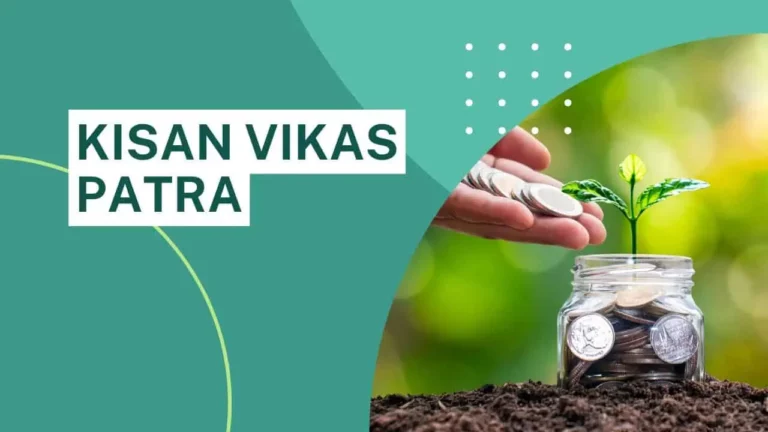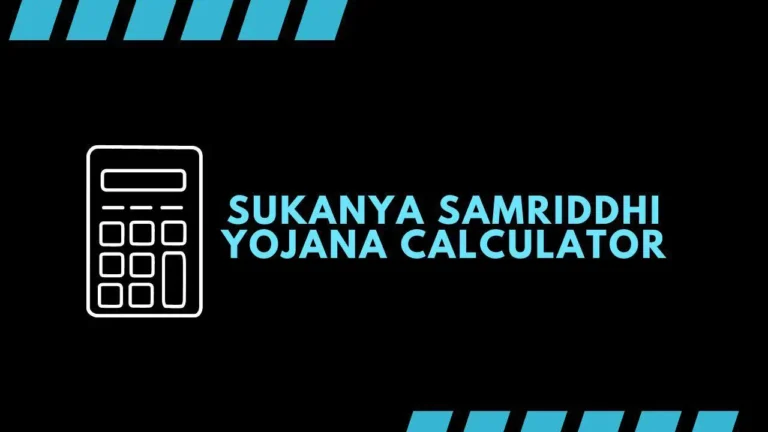Sukanya Samriddhi Yojana (SSY): Post Office Scheme, Interest Rate, Age Limit, Excel Calculator, Eligibility, Benefits And Details
Sukanya Samriddhi Yojana (SSY) is a government-backed savings scheme in India that aims to provide financial security to girls. The Sukanya Samriddhi Yojana scheme was launched in 2015 as a part of the “Beti Bachao, Beti Padhao” campaign and offers attractive interest rates and tax benefits to encourage parents to save for their daughter’s future.

In this article, we will provide a detailed overview of the Sukanya Samriddhi Yojana, including its latest interest rate, features, advantages, disadvantages, benefits, eligibility criteria, and how to open an account in the post office.
If you are a parent looking to secure your daughter’s future or an investor seeking a reliable savings scheme, this article will provide you with all the information you need to know about the Sukanya Samriddhi Yojana.
Once set, the interest rate for the Sukanya Samriddhi Account remains unchanged. For 2024, the Sukanya Samriddhi Yojana offers an interest rate of 8.2% annually.
So, let’s explore this scheme and find out how it can help you secure your daughter’s future.
Consider using the Sukanya Samriddhi Yojana Calculator
Page Contents
Sukanya Samriddhi Yojana Scheme Interest Rate and Details
| Scheme Name | Sukanya Samriddhi Yojana |
| Launched By | Government of India |
| Year of Launch | 2015 |
| Target Audience | Parents or legal guardians of girl children |
| Minimum Age of Girl Child | 10 years |
| Maximum Age of Girl Child | 18 years |
| Account Opening | Only one account can be opened for a girl child |
| Minimum Deposit | Rs. 250 per year |
| Maximum Deposit | Rs. 1.5 lakh per year |
| Interest Rate | 8.2% |
| Interest Rate Revised On | January 1st, 2024 |
| Maturity Period | 21 years from the date of opening the account |
| Partial Withdrawal | Allowed after the girl child reaches the age of 18 |
| Tax Benefits | Contributions are eligible for deduction under Section 80C of the Income Tax Act, 1961 |
| Eligibility for Account Transfer | The account can be transferred anywhere in India |
| Penalty for Non-Deposit | If the minimum deposit is not made, the account becomes inactive and can be revived by paying a penalty of Rs. 50 per year along with the minimum deposit amount |
Note: The information provided in the table is subject to change, and readers are advised to verify the latest details with the concerned authorities before making any financial decisions.
Consider reading: Latest Small Saving Scheme Interest Rate: Latest Revised Interest Rates
Sukanya Samriddhi Yojana Calculator in Excel
Here is the Sukanya Samriddhi Yojana Calculator in Excel to help you plan your investments.
Sukanya Samriddhi Yojana (SSY) Overview
The Sukanya Samriddhi Yojana (SSY) is a significant savings scheme in India, designed to empower the future of girl children through financial planning. This scheme, initiated in 2015 under the “Beti Bachao, Beti Padhao” campaign, serves as a robust financial tool for parents or legal guardians to save for their daughter’s education and marriage expenses.
Sukanya Samriddhi Yojana (SSY): Key Features and Benefits
- Regular Contributions for a Brighter Future: Parents can make yearly contributions to plan for major future expenses of their daughters, ensuring a secure financial foundation.
- Affordable and Flexible Deposits: With a minimal annual deposit requirement of Rs. 250 and a ceiling of Rs. 1.5 lakh, SSY is accessible to a wide range of income groups.
- Duration and Maturity: The account remains active for 21 years or until the girl child’s marriage after turning 18, providing long-term growth potential.
- Attractive Interest Rates for Enhanced Savings: The current annual interest rate of 8.2%, compounded yearly and exempt from tax, makes SSY a lucrative savings option.
- Tax Efficiency: Contributions up to Rs. 1.5 lakh annually are eligible for tax deductions under Section 80C. Moreover, both the interest earned and the maturity amount are tax-free, enhancing the scheme’s appeal.
- Eligibility and Documentation: Opening an SSY account is straightforward. Essential documents include the girl child’s birth or school certificate and the parents’ or guardians’ identity and address proofs.
- Accessible Account Opening: The scheme’s widespread accessibility is ensured through post offices and authorized banks across the country.
In summary, the Sukanya Samriddhi Yojana stands out as a reliable and beneficial savings scheme for parents aiming to secure their daughter’s future. Its combination of favorable interest rates, tax benefits, and flexible tenure makes it an attractive option for fostering financial stability and growth.
Sukanya Samriddhi Yojana Rules
The Sukanya Samriddhi Yojana (SSY) is a government-backed savings scheme in India, aimed at encouraging long-term financial planning for a girl child’s future, especially for her education and marriage expenses. Understanding its rules is crucial for maximizing its benefits. Here’s a breakdown of the key rules as per the Department of Economic Affairs (DEA), India:
- Eligibility by Age: An SSY account can be opened for a girl child until she reaches the age of 10 years. This ensures early initiation into savings for the child’s future.
- Single Account Norm: Only one account is allowed per girl child. This rule is to maintain the scheme’s focus on individual benefit and prevent misuse.
- Opening Venues: The account can be opened at post offices or branches of authorized commercial banks, making it easily accessible across India.
- Documentation for Opening: The birth certificate of the girl child is a mandatory document for opening an account. This is to verify the age and eligibility of the account beneficiary.
- Initial and Subsequent Deposits: The account can be activated with a minimum deposit of Rs. 250, and subsequent deposits can be in multiples of Rs. 100. It’s essential to maintain a minimum deposit of Rs. 250 every financial year to keep the account active.
- Annual Deposit Cap: The maximum deposit limit per financial year is capped at Rs. 1,50,000. This limit aligns with tax-saving investment caps under Section 80C of the Income Tax Act.
- Interest Earnings: The account accrues interest at a rate notified by the government, compounded yearly. This helps in growing the savings significantly over the account’s tenure.
- Withdrawal for Education: Upon the account holder turning 18, a withdrawal up to 50% of the balance at the end of the preceding financial year is permitted, specifically for meeting education expenses.
- Transferability Across India: The account offers the flexibility of being transferred from one post office/bank to another anywhere in India, a convenience for families on the move.
- Maturity and Closure Conditions: The account matures after 21 years from the date of opening or upon the marriage of the account holder, whichever is earlier. This ensures that the funds are available for the girl’s higher education or marriage.
The SSY is tailored to be a secure, long-term investment option for parents looking to build a financial foundation for their daughter’s future, combining the benefits of attractive interest rates and tax efficiency.
Looking for an investment for your daughter? Consider reading: Top 10 Best investment options in India
Advantages of the Sukanya Samriddhi Yojana
Here are some of the key advantages of the Sukanya Samriddhi Yojana (SSY) scheme:
- High rate of interest: The Sukanya Samriddhi Yojna (SSY) account earns a fixed rate of interest, which is determined by the government every quarter. The interest rate is currently set at 7.6% per annum.
- Tax benefits: The interest earned on a Sukanya Samriddhi Yojana (SSY) account is tax-free under the Income Tax Act. In addition, deposits made to the account are eligible for tax deductions under Section 80C of the Income Tax Act.
- Long-term savings: The Sukanya Samriddhi Yojna (SSY) account matures when the girl reaches the age of 21 or when the account has been in operation for 21 years, whichever is earlier. This encourages long-term saving and financial planning for the future.
- Security: The SSY scheme is backed by the government, which adds an element of security to the investment.
- Easy to open and operate: The Sukanya Samriddhi Yojna (SSY) account can be opened at a bank or a post office and requires a minimum deposit of INR 250. Deposits can be made in cash, by check, or through electronic transfer.
- Promotes the welfare of girls: The SSY scheme is part of the “Beti Bachao, Beti Padhao” campaign, which aims to promote the welfare of girls in India. By encouraging parents to save for their daughter’s future, the scheme helps to reduce the economic burden on families and promotes gender equality.
Disadvantages of Sukanya Samriddhi Yojana
Here are some potential disadvantages of the Sukanya Samriddhi Yojana (SSY) scheme:
- Limited flexibility: The SSY scheme is designed specifically for saving for the education and marriage expenses of a daughter. While withdrawals are allowed under certain circumstances, premature withdrawal is not allowed before the completion of 18 years from the date of opening the account, except in case of the death of the depositor or the girl. This can limit the flexibility of the investment.
- Limited investment options: The SSY scheme only allows for the investment of funds in a fixed deposit account, which may not provide the same level of potential returns as other investment options.
- Limited to daughters: The SSY scheme is only available for daughters, which may not be suitable for families with only sons or families that want to save for the education and marriage expenses of both daughters and sons.
- Limited to Indian residents: The SSY scheme is only available to residents of India, which may not be suitable for non-residents or foreign investors.
Premature Withdrawal in Sukanya Samriddhi Yojana
Premature withdrawal is allowed in Sukanya Samriddhi Yojana in 2 cases:
- Account Holder’s Demise: In the unfortunate event of the account holder’s death, the SSY account will be closed immediately. The closure process requires the submission of a death certificate issued by a competent authority. Upon closure, the account’s balance, along with the interest accrued up to the month preceding the premature closure, will be paid to the account holder’s guardian. This rule ensures that the funds are responsibly handled and provided to the rightful beneficiary.
- Cases of Undue Hardship: The Central Government allows for the pre-mature closure of an SSY account in instances where its operation or continuation poses undue hardship to the account holder. However, this is subject to stringent scrutiny. The government must be satisfied, based on a written record of reasons, that the closure is justified due to extreme compassionate grounds. Such grounds typically include the need for medical support in life-threatening situations or in events like the death of a guardian. This clause is designed to provide financial relief in critical situations while preventing misuse of the scheme’s benefits.
These rules for premature withdrawal underscore the scheme’s commitment to serving the long-term welfare of the girl child, while also providing necessary flexibility in dire circumstances. It balances the goal of disciplined saving with compassion and practicality in the face of unforeseen events.
Sukanya Samriddhi Yojana Post Office Investment Step-by-Step Guide
To invest in the Sukanya Samriddhi Yojana via post office, you need to follow these steps:
- Visit your nearest post office branch and ask for the SSY account opening form.
- Fill up the form with the details of the girl child and the guardian, such as name, date of birth, address, Aadhaar number, etc. You also need to paste a photograph of the girl child and the guardian on the form.
- Enter the amount of initial deposit, which can be between Rs. 250 and Rs. 1.5 lakh, and the mode of payment, such as cash, cheque, or demand draft. You can also choose the option of electronic transfer if you have a post office savings account.
- Enter the nomination details, if any, and sign the declaration at the end of the form.
- Submit the form along with the KYC documents of the girl child and the guardian, such as Aadhaar card, passport, etc., to the post office staff.
- The staff will verify the documents and issue a passbook for the SSY account, which will have the account number, name of the girl child, date of birth, guardian’s name, and the initial deposit amount.
You have the option to add more funds to your SSY account through either a visit to your local post office branch or by utilizing the electronic transfer method. The annual deposit requirements range from a minimum of Rs. 250 to a maximum of Rs. 1.5 lakh.
You’re allowed to make deposits multiple times within a year, as long as the total amount remains within this limit. The SSY account will reach maturity either 21 years from the opening date or upon the girl child’s marriage, whichever comes first.
Additionally, after the girl child turns 18 years old, you have the flexibility to make partial withdrawals of up to 50% of the account balance for her higher education.
Consider reading: National Savings Certificate (NSC) Interest Rate, Post Office, Calculator, Benefits
Is it Good to Invest in Sukanya Samriddhi Yojana?
Investing in Sukanya Samriddhi Yojna may not be the best decision if you are looking for good returns for your girl child.
But If you are looking for a secure investment that gives the highest interest rates along with tax benefits then you can invest in the Sukanya Samriddhi Yojana.
If you are looking for better returns than Sukanya Samriddhi Yojana then you should look at investing in equity mutual funds, which historically have given better returns.
When does Sukanya Samriddhi Yojana Mature
The Sukanya Samriddhi Yojna account shall mature on completion of 21 years from the date of opening of the account or on the marriage of the Account holder whichever is earlier.
One withdrawal shall be allowed upon attaining the age of 18 years for the account holder to meet education expenses up to 50 % of the balance at the credit of the preceding financial year.
Is Investment in Sukanya Samriddhi Yojana Better than Mutual Funds?
Sukanya Samriddhi Yojana gives 8.2% interest rates as of January 2024. The historic returns of equity mutual funds over 20 years are more than 10% CAGR.
So if you are not willing to take any risk of market fluctuation and want safe steady returns then you Sukanya Samriddhi Yojana is a better investment than mutual funds.
But if you are willing to take a bit of risk then investing in an equity mutual fund may give you far better returns than Sukanya Samriddhi Yojana.
Consider reading: Top 10 Best Mutual Funds to Start SIP
How much should I Invest in Sukanya Samriddhi Yojana
Although Sukanya Samriddhi Yojana is an excellent choice for safe investments you shouldn’t all of your savings for your girl child in Sukanya Samriddhi Yojana; Equity mutual funds have given far better returns over the long term as compared to Sukanya Samriddhi Yojana.
You should look to diversify your investments and look for instruments like equity mutual funds, Stocks, and hybrid funds that can give you excellent returns compared to Sukanya Samriddhi Yojana over the long term.
Final Thoughts on Sukanya Samriddhi Yojana (SSY): Post Office Scheme, Interest Rate, Age Limit, Excel Calculator, Eligibility, Benefits And Details
To recap, Sukanya Samriddhi Yojana (SSY) is a government-backed savings scheme for the girl child, launched as part of the Beti Bachao, Beti Padhao campaign. SSY aims to provide financial security and empowerment to the girl child by enabling her parents or guardians to open a special account in her name.
SSY offers attractive features such as a high interest rate of 8.2% per annum, tax benefits under section 80C, and a long maturity period of 21 years. SSY is one of the best investment options for the girl child’s education and marriage expenses.
SSY accounts can be opened at any post office or authorized bank branch with a minimum deposit of ₹250 and a maximum of ₹1.5 lakh per year. SSY is a scheme that not only promotes savings but also encourages the welfare and development of the girl child in India.
FAQs on Sukanya Samriddhi Yojana (SSY): Post Office Scheme, Interest Rate, Age Limit, Excel Calculator, Eligibility, Benefits And Details
How to Open Sukanya Samriddhi Yojana Account?
Sukanya Samriddhi Yojana can be opened in any post office or most public/private sector banks.
Can I Open Sukanya Samriddhi Yojana Online?
No. You can not open a Sukanya Samriddhi Yojana account online as of January 2023. You need to either visit a bank or post office to open the Sukanya Samriddhi Yojna account.
What is the Latest Interest Rate for Sukanya Samriddhi Yojana in 2023?
As of April 2023, the rate of interest for Sukanya Samriddhi Yojana is 8.0%.
What are the Disadvantages of Sukanya Samriddhi Yojana?
The biggest disadvantage of the Sukanya Samriddhi Yojana is the lock-in period. You can not withdraw the money before the girl child turns 18.
What is the Maximum Amount that can be Invested in Sukanya Samriddhi Yojana?
You can invest a maximum of 150000 in a financial year in a Sukanya Samriddhi Yojana account.
Does Sukanya Samriddhi Yojana Qualify for Tax Savings as part of 80C?
Yes, investments in Sukanya Samriddhi Yojana account will qualify for tax benefits under section 80C.
What is the Age Limit for Investing in Sukanya Samriddhi Yojana?
10 years. The girl should be less than 10 years old to be eligible to qualify for Sukanya Samriddhi Yojana account.
Is Sukanya Samriddhi better than PPF?
Sukanya Samriddhi account fetches slightly higher interest than PPF in January 2023. Although both of them have a longer lock-in period, PPF matures in 15 years which is slightly earlier than the Sukanya Samriddhi account which is locked for at-least 18 years before you can make a partial withdrawal.
Is Sukanya Samriddhi Maturity Tax Free?
Yes. The maturity amount of Sukanya Samriddhi account is exempted from tax.
Can both parents claim the Tax Benefits of Sukanya Samriddhi Yojana?
No. Only one parent can claim tax benefits of investment in the Sukanya Samriddhi Yojana.
How many Sukanya Samriddhi Yojana Accounts can be opened?
Only one. You can open only one Sukanya Samriddhi Yojana account for a girl child.





